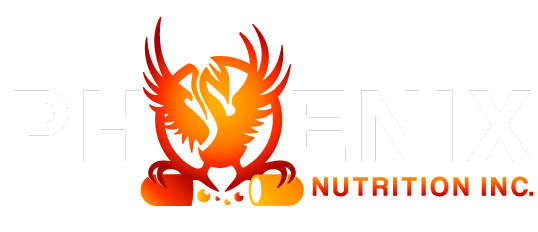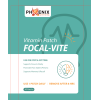Maintaining the best diet plan for Weight loss is a highly individual process, and what works best for one person may not work for another. However, there are some weight loss general principles that can guide you in creating a healthy, sustainable diet plan.
Maintain your weight using a healthy diet plan
There are several ways that will help you to manage and maintain your weight and this can happen only by using a healthy diet plan such as:
a) Balanced diet: Aim for a balanced diet that includes carbohydrates, proteins, and fats. Each of these macronutrients has important roles in the body, and a diet that includes all of them in appropriate proportions is generally healthier and more sustainable than a diet that heavily restricts one or more groups.
b) Portion control: Pay attention to portion sizes. Even healthy foods can contribute to weight gain if you eat them in large amounts.
c) Eat Whole Foods: Choose whole foods, such as fruits, vegetables, whole grains, lean proteins, and healthy fats, as much as possible. These foods are generally more filling and nutritious than processed foods.
d) Regular physical activity: Exercise is an important part of most weight loss plans. It helps you burn calories, and it's good for your overall health.
e) Being Consistent: Make sure your diet plan is one that you can stick with for the long term. Quick fixes and drastic diets can be difficult to maintain and may lead to yo-yo dieting.
f) Keeping yourself Hydrated: Drink enough water throughout the day. Sometimes, we mistake thirst for hunger.
g) Use a supplement: There are various weight loss supplements in the market, find the one that suits you. However, consult a doctor before adding any new supplement to your diet plan. You may also try Phoenix Natural Supplements such as Bodivitaminosine or Lipovitasine for weight loss to your added advantage.
Choosing the best diet plan for weight loss
Choosing the best diet plan for weight loss can be a complex decision because it depends largely on your individual needs, preferences, and health conditions. However, here are a few dietary approaches with scientific support for promoting weight loss and overall health:
1. Mediterranean Diet:
This diet focuses on fruits, vegetables, whole grains, fish, lean meats, and healthy fats such as olive oil. It's associated with heart health and weight loss. The Mediterranean diet is a way of eating that is inspired by the traditional cuisine of countries like Greece, Italy, and Spain. This diet primarily focuses on consuming plant-based foods such as fruits, vegetables, whole grains, legumes, nuts, and seeds. It also involves including fish and seafood in your meal plan while minimizing the consumption of red meat.
The Benefits:
One of the most significant benefits of following a Mediterranean diet is its potential to reduce the risk of developing chronic heart disease and diabetes. The abundance of nutrients found in this way of eating can play a beneficial role in maintaining overall health.
For instance, the healthy fats present in olive oil can help improve cholesterol levels while the antioxidants in fruits and vegetables help protect against free radicals that cause cellular damage. Additionally, incorporating more fiber-rich whole grains into your meals can keep you feeling fuller for longer periods which aids weight loss efforts.
The Downsides:
The Mediterranean diet can be expensive. Fresh produce and high-quality olive oil can be costly, making it difficult for low-income families to maintain a balanced diet. Additionally, some traditional Mediterranean foods like cured meats and cheeses are high in saturated fat and sodium, which can increase the risk of heart disease and other health problems.
Also while the Mediterranean diet has been linked to a lower risk of chronic diseases such as cancer and diabetes, it may not be suitable for everyone. People with certain medical conditions such as kidney disease or pancreatitis may need to limit their intake of certain foods like nuts or fish which are staples on this diet.
2. Dash Diet:
The Dash Diet - short for Dietary Approaches to Stop Hypertension - is a healthy, balanced eating plan designed to help lower high blood pressure and improve overall health. DASH emphasizes fruits, veggies, whole grains, lean protein, and low-fat dairy. While initially designed to lower blood pressure, it's also effective for weight loss. The diet also limits sodium intake, which is essential for maintaining healthy blood pressure levels.
The Benefits:
One major benefits of Dash Diet are it is incredibly flexible and easy to follow. It emphasizes whole foods like fruits, vegetables, lean proteins, and whole grains while minimizing processed foods and added sugars. This not only helps with weight management but also boosts energy levels and reduces inflammation throughout the body.
Additionally, because the diet is so nutrient-dense, it can help reduce your risk of chronic diseases like heart disease, stroke, diabetes, and even some types of cancer. Another benefit of the Dash Diet is that it promotes healthy digestion by encouraging fiber-rich foods like beans and legumes. Additionally, studies have shown that the diet can improve cholesterol levels and insulin sensitivity – both important factors in maintaining good cardiovascular health.
The Downsides:
One of the biggest criticisms of the DASH diet is that it can be difficult to follow if you are used to eating more processed or convenience foods. The diet emphasizes whole, nutrient-dense foods, which can take more time and effort to prepare.
Another downside of the DASH diet is its emphasis on low sodium intake. While reducing sodium intake can have health benefits like lower blood pressure and reduced risk of heart disease, some people may struggle to stick to such strict limits. Additionally, cutting back on salt can affect food's flavor profile, making meals less enjoyable for some individuals.
Also although the DASH diet is generally considered safe and healthy for most people, it may not be appropriate for everyone.
3. Plant-Based Diets:
Plant-based diets have been gaining popularity in recent years due to the numerous health benefits they offer. A plant-based diet is centered around the consumption of plant foods such as vegetables, fruits, whole grains, legumes, nuts, and seeds while minimizing or eliminating animal products. These types of diets are typically low in saturated fat and high in fiber, vitamins, minerals, and antioxidants.
There are different types of plant-based diets which include vegetarianism (no meat), veganism (no animal products), flexitarianism (mostly plant-based with occasional meat consumption), and pescatarianism (plant-based with occasional fish intake). The primary focus of these diets is on nutrient-dense whole foods rather than processed or refined foods. Plant-based eating has been associated with a reduced risk of chronic heart disease, type 2 diabetes, obesity, and certain cancers.
The Benefits:
One primary benefit of a plant-based diet is it may reduce the risk of chronic heart disease, type 2 diabetes, and certain cancers. Plant foods are extremely rich in vitamins, minerals, and fiber.
Therefore it can improve your overall health while reducing inflammation in the body. Additionally, studies have shown that those who follow a plant-based diet typically have lower rates of obesity due to a lower calorie intake from animal products. Also, some other advantage of a plant-based diet is its positive impact on the environment.
The Downsides:
Plant-based diets may not provide adequate levels of certain nutrients that are essential for human health. One such nutrient is vitamin B12, which is found almost exclusively in animal products.
This vitamin plays an important role in nerve function and red blood cell production. Without sufficient amounts of B12, individuals on plant-based diets can develop anemia or experience nervous system damage.
Additionally, excessive consumption of certain plant foods can lead to the development of kidney stones due to high levels of oxalates found in some plants such as spinach and rhubarb. Furthermore, many plant-based food items contain antinutrients like phytates that interfere with the absorption of minerals such as iron and zinc.
4. Low-Carb Diets:
Like the ketogenic diet or Atkins diet. These can cause significant weight loss, but some people find them difficult to follow long-term. Low-carb diets, also known as low-carbohydrate diets, are eating plans that focus on reducing the amount of carbohydrates in one’s diet.
This type of diet typically involves limiting or eliminating foods such as bread, pasta, rice, and sugary drinks. Instead, low-carb dieters tend to consume more protein-rich foods like meat, fish, and eggs along with non-starchy vegetables and healthy fats.
The goal of a low-carb diet is to reduce insulin levels in the body by lowering carbohydrate intake. Insulin is a hormone that regulates blood sugar levels and promotes fat storage. By reducing insulin levels through a low-carb diet, the body is forced to burn stored fat for energy instead of relying on glucose from carbohydrates. This metabolic state is known as ketosis which results in weight loss for many individuals who follow this type of eating plan.
The Benefits:
One major advantage of a low-carb diet is its ability to promote weight loss. When you reduce your carbohydrate intake, your body will start burning stored fat for energy instead of relying on glucose from carbs. This can significantly lose weight over time.
Additionally, Low-carb diets have been shown to reduce appetite and cravings, making it easier for people to stick with their new eating plan. Also, a low-carb diet focuses on reducing the intake of carbohydrates while increasing the consumption of protein and healthy fats.
Numerous studies also show that low-carb diets can provide a wide range of benefits, including weight loss, improved blood sugar control, and reduced risk of chronic heart disease.
The Downsides:
One big drawback you may find on low-carb diets is the potential for nutrient deficiencies. Low-carb diets typically limit or eliminate grains and fruits, both of which are important sources of vitamins, minerals, and fiber.
This can lead to a deficiency in several essential nutrients such as vitamin C, potassium, and magnesium. In addition, low-carb dieters may not consume enough fiber which can lead to digestive issues such as constipation.
Also, low-carb diets can be difficult to sustain long-term. Many people find it challenging to stick with a diet that restricts entire food groups or severely limits calorie intake.
5. Intermittent Fasting:
The philosophy behind intermittent fasting is to reduce the number of calories consumed during the day by limiting the amount of time spent eating.
This approach changes when you eat rather than what you eat. There are many methods, but the most popular ones are the 16/8 method (fasting for 16 hours a day), the 5:2 diet (restricting calories to 500-600 two days a week), and the eat-stop-eat method (one or two 24-hour fasts per week).
It's essential to note that while intermittent fasting can be effective for weight loss and improving overall health, it's not suitable for everyone. Pregnant women or individuals with certain medical conditions should speak with a healthcare professional before starting this diet plan.
The Benefits:
There are several benefits to Intermittent Fasting that make it an attractive option for you to improve your overall health.
One benefit of this diet plan is to lose weight. By restricting calorie intake during fasting periods, your body is forced to burn stored fat for energy, resulting in weight loss over time.
The other benefit of IF is improved brain function. Studies have shown that intermittent fasting can increase the production of brain-derived neurotrophic factor (BDNF), a protein that promotes the growth and survival of neurons.
Additionally, it can help reduce insulin resistance and inflammation, both of which play a role in obesity and other chronic diseases.
The Downsides:
One major downside of Intermittent Fasting is that it can lead to feelings of hunger and irritability. This is especially true for those who are used to eating three meals a day spread out over 12 hours or more; suddenly restricting oneself to an eight-hour window can be challenging.
Additionally, a lack of nutrients consumed during fasting periods can cause fatigue, dizziness, or headaches. Also, the potential downside of this best diet plan for weight loss is that it can negatively affect social life and relationships with others.
6. The Volumetrics Diet:
The Volumetrics Diet is a unique approach to weight loss that focuses on the volume of food consumed rather than the number of calories. Developed by Barbara Rolls, a nutritionist, and professor at Penn State University, this diet plan is based on the idea that people can eat more and still lose weight if they choose foods with low-calorie density.
The basic premise of the Volumetrics Diet is simple: fill up on foods that are high in water content and fiber but low in calories. This means consuming plenty of fruits, vegetables, whole grains, lean proteins, and legumes while minimizing high-calorie processed foods such as chips and candy. By choosing these types of foods, individuals can eat larger portions without exceeding their daily caloric intake.
The Volumetrics Diet also emphasizes physical activity as an essential part of weight loss. This focuses on foods with low-calorie density, like fruits and vegetables, and high fiber content to make you feel full without consuming too many calories.
The Benefits:
One of the main benefits of the Volumetrics Diet plan is its flexibility. Unlike other fad diets that restrict certain food groups or require strict calorie counting, this approach emphasizes making small changes over time and finding sustainable ways to eat healthier.
While the primary benefit of the Volumetrics diet plan is its ability to promote sustainable weight loss. By emphasizing the intake of low-calorie but nutrient-dense foods such as fruits, vegetables, and whole grains, individuals can reduce their caloric intake while still feeling full and satisfied.
This approach also helps to avoid feelings of deprivation or hunger that often lead to binge eating or overeating. Furthermore, research has shown that the Volumetrics diet plan can lead to improved heart health by reducing blood pressure and cholesterol levels.
The Downsides:
While the approach sounds promising, there are several downsides to the Volumetrics Diet plan. Following a Volumetrics Diet plan can be quite challenging as it requires significant adjustments to one's eating habits and lifestyle.
Individuals need to be highly committed and disciplined to stick with this type of diet long-term. Also, some foods that are considered "low-calorie" under this diet may not necessarily be healthy or nutritious for individuals.
Conclusion:
Remember, the best diet plan for you depends on your individual needs and circumstances. It's always a good idea to consult with a healthcare provider or a registered dietitian before starting any new diet plan. They can provide guidance based on your specific needs, preferences, and health status.
Lastly, any diet plan should ideally be combined with regular physical activity, adequate sleep, and good hydration to promote health and support weight loss.

















